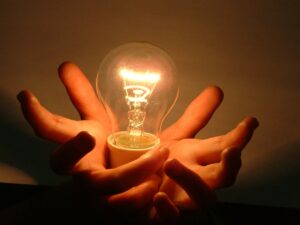
“Pushing the envelope means testing limits and trying out new, often radical ideas. The expression comes originally from mathematics and engineering, where an envelope is a boundary, but was popularized by test pilots.” (Termium Plus)
It has been said that Thomas Edison tested 10,000 different materials before finding the right filament. In reality, “Edison tested sixteen hundred different filaments—everything from coconut fiber to human hair—before settling on carbonized bamboo fiber.” (theartof.com)
Throughout history, it has been creative efforts and experimentation that have brought us all the great new inventions. By definition, all creative endeavors involve creation – definition – “the action or process of bringing something into existence.” (Oxford Language Dictionary)
Writing fiction is no exception. In the beginning of Jack Bickham’s book, Scene and Structure, the author summarizes the history of changes in the structure of fiction from epic poetry, to personal letters, to journal or diary entries, to a personal “conversational” structure, and finally a sequence of scenes played in the here and now as if they were taking place as the reader reads and imagines them.
We sometimes forget that most inventions continue to change and improve. Just look at your personal experience, especially with computers and telecommunication, from the time you started a job to the present.
Readers change, and books have changed. As writers, we are involved in a creative occupation, and it is good (Dare I say our responsibility?) to continue to experiment, to learn what works, and discover what doesn’t. Maybe even try something truly different.
We must learn the rules before we try to break them, but never stop pushing the envelope. Never stop testing the boundaries. Never stop learning!
Questions:
- What major changes (inventions) have occurred in your occupation prior to becoming a writer?
- What do you think are the most significant creations/inventions in story telling?
- What experiments have you done (or do) to create improved ways to serve up a story for your readers?
